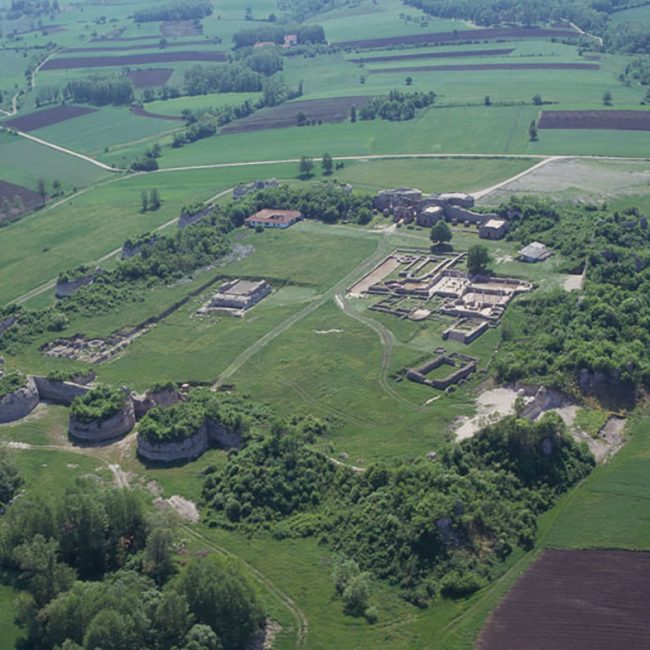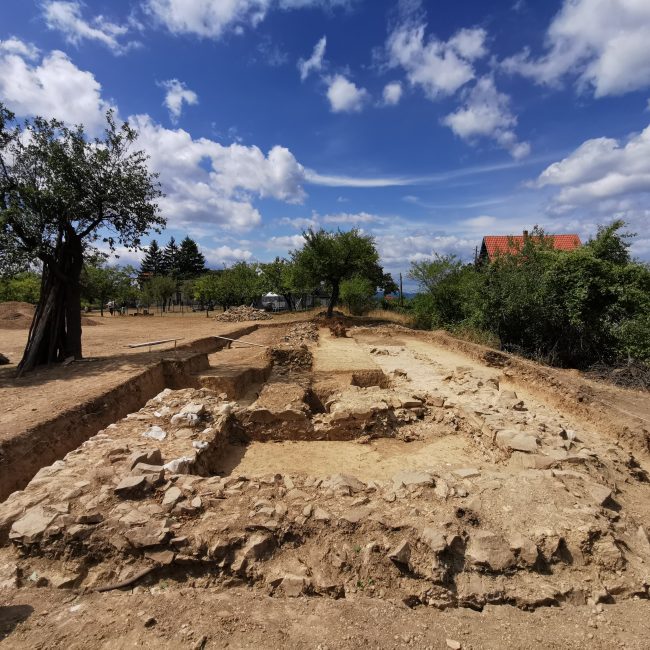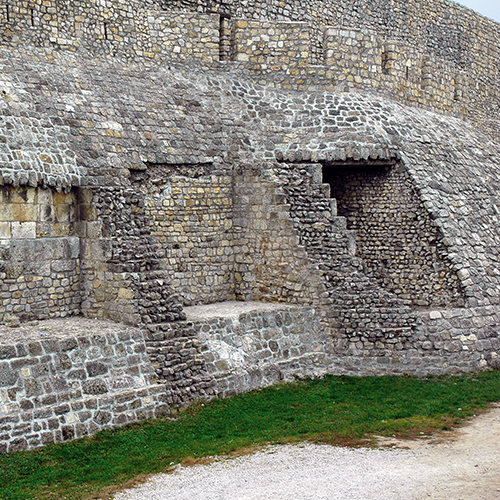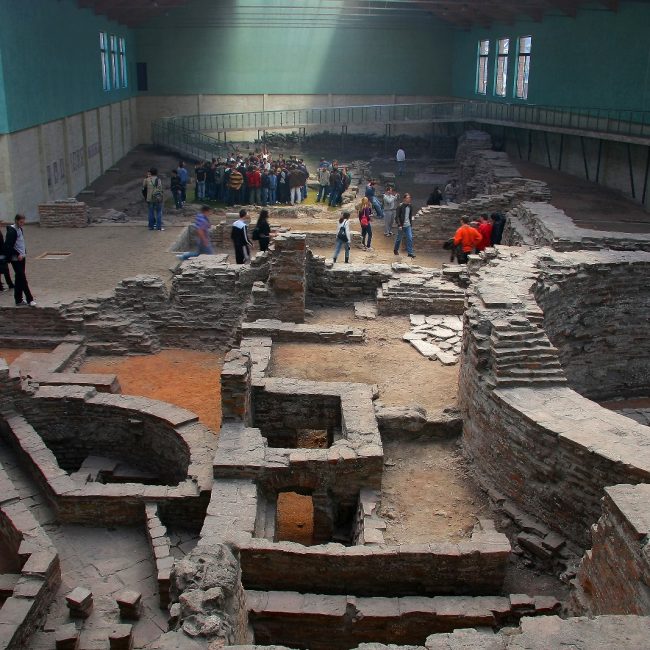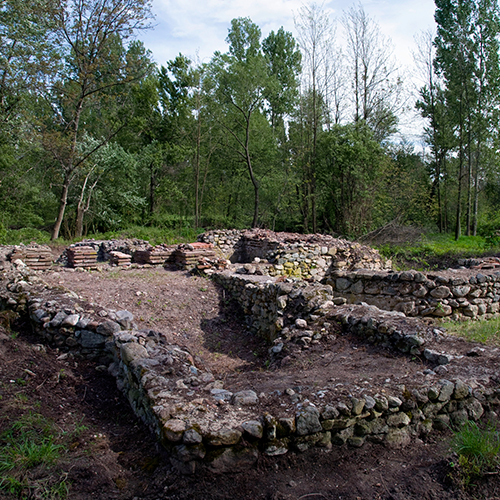ANTIQUITY PROJECT
The research of antique archaeology is focused on the analysis of Roman city centers, military camps and residential complexes in Serbia, above all those on which systematic works are in progress (Sirmium, Viminacium, Mediana, Romuliana, Sarkamen, Ravna). Particular attention of national and international scientists was drawn by the research of Viminacium and the achievements of this project in the last 20 years, as well as two imperial residences, in Gamzigrad (Romuliana) and in Šarkamen, which, beside the palace, also contain specific sacral monuments. The palaces were founded in places where villas used to exist, which were with extensive architectural interventions, transformed into the residences of emperors from the tetrarchy period. The research at Mediana near Nis has shown that in this locality as well, a luxurious villa was transformed into a residential complex in the period from 330. to 378. year.
The processes of transformation of city centers went in the other direction, i.e. they were formed either around indigenous settlements or around military camps. Over time, the settlements next to the camps grew into centers with all the characteristics of a city, which include a multi-ethnic population structure, economic and public facilities of a different character, as well as a developed craft and trade activity. This is also attested by the decades-long research of Viminacium and Singidunum. During the previous project cycle, the excavation of the only amphitheatre on the land of former Upper Moesia was completed and the research of the military camp in Viminacium began. The research on Viminacium lasts for almost two decades during the whole year (the excavations are conducted for 11 out of 12 months and the only period when there are no excavations is from mid-December to mid-January). The research implies a multidisciplinary approach.
In addition to defining their construction phases, the researchers will follow the process of transformation of particular settlements and their mutual relations. This includes the analysis of architectural objects, as well as the processing of all movable finds, which requires the participation of architects, archaeologists and specialists in certain fields, numismatists and epigraphers. In this way, it will be possible to see the specifics of the processes of Romanization and urbanization in the interior of the Balkans.
-
FELIX ROMULIANA – GAMZIGRAD
The fortified palace of Emperor Galerius represents the best preserved work of Roman architecture in the whole territory of Serbia. In 2007, this site was inscribed on the UNESCO World Heritage List.
-
GERULATA-MIROČ
The Roman site of Gerulata in the village of Miroč on the mountain of the same name, in the territory of the municipality of Majdanpek, includes a small Roman fortification - a castle and a civilian settlement, which protected the road that connected the valley of the Poreč river and the ancient Taliata (Taliata) near Donji Milanovac with the Roman
-
NAISSUS – MEDIANA
The archaeological site of Mediana is an open-type settlement located about 4 km east of Niš (Naissus). It developed from an agricultural farm to a luxurious administrative-residential complex with buildings of various purposes. It was the birthplace of the Roman Emperor Constantine the Great who, in the period between 317 and 334, often stayed in the Balkans and then built
-
NAISSUS – NIŠ FORTRESS
The building with an octagon is located inside the Late Antique fortification of Naissus, modern Niš, on the locality known as “Gradsko Polje”, and present a luxurious public building with rich architectural plastic, fresco painting and mosaics. Based on the position and monumentality of the building with an octagon, it can be assumed that it was used for the temporary
-
SINGIDUNUM – BELGRADE
Ancient Singidunum is a Roman city founded at the confluence of the Sava and the Danube, by the development of a military settlement built next to the castrum of the IV Flavian Legion.
-
SIRMIUM – SREMSKA MITROVICA
The remains of the Roman Sirmium are located below Sremska Mitrovica, a small city on the Sava river, about 70 km west of Belgrade. The Roman city was founded in the 1st century on the site of indigenous settlements. Sirmium became a Roman colony in 89, during the reign of Emperor Domitian. In the following period, it was the capital
-
TIMACUM MINUS – RAVNA NEAR KNJAŽEVAC
The Roman fortification of Timacum Minus was the administrative centre of the Roman mining area, and is dated from the mid-1st to the mid-5th century AD. The site is located on the left bank of the Beli Timok river, about 400 m east of the village of Ravna, which is 10 km northwest of Knjaževac, in eastern Serbia. The remains
-
VRELO – ŠARKAMEN NEAR NEGOTIN
The Roman site of Vrelo is located 4 km west of the village of Šarkamen, which is located about 20 km northwest of Negotin, in eastern Serbia. Šarkamen is a fortified residence, and the memorial complex with a mausoleum and the tumulus are dated to the beginning of the 4th century and are ascribed to the tetrarch Maximinus Daia (305–313).


